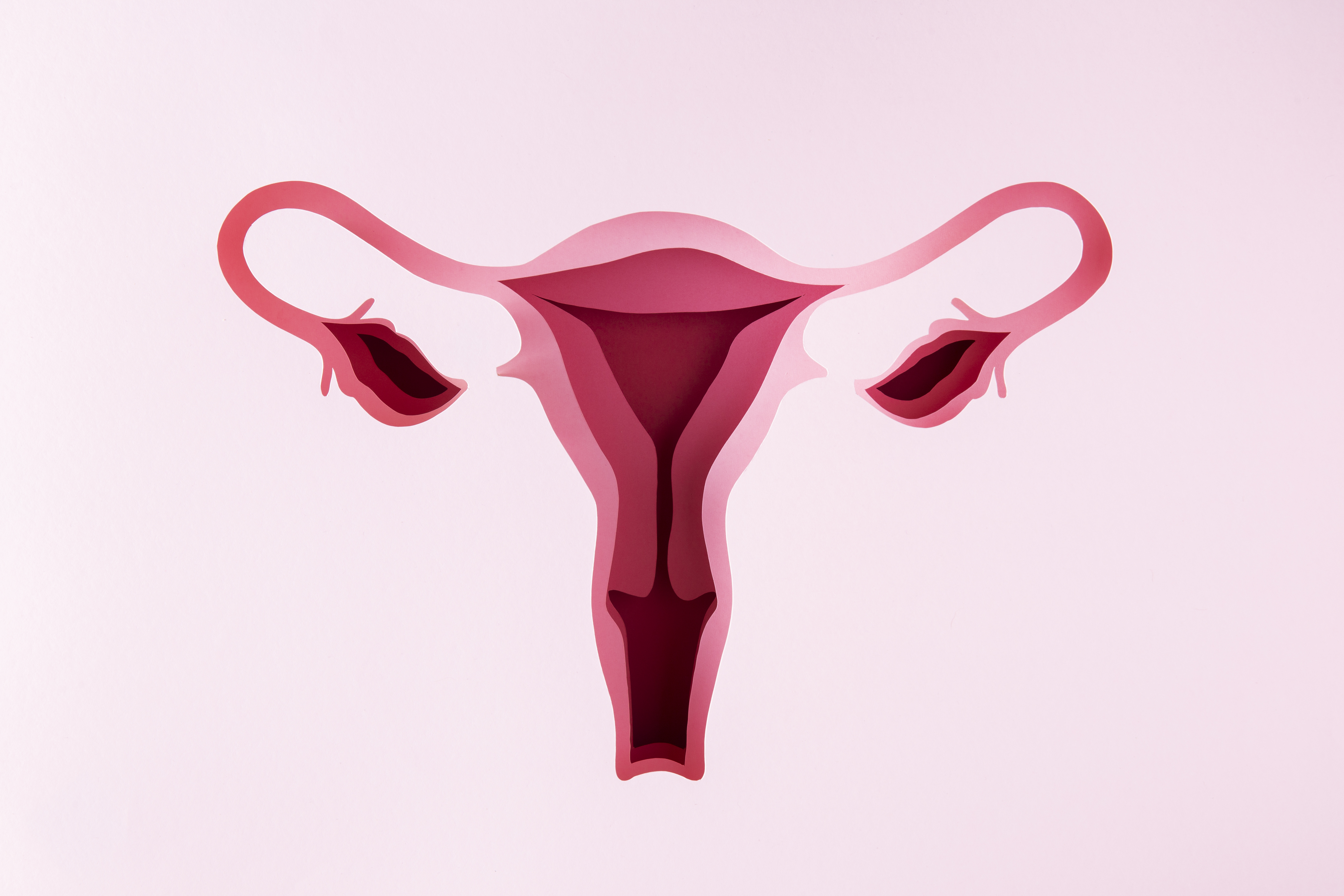Definisi
Perdarahan pasca persalinan atau dalam bahasa inggris dikenal dengan nama postpartum hemorrhage, adalah perdarahan berat yang terjadi dalam rentang waktu 24 jam hingga 12 minggu setelah persalinan. Semakin cepat terjadinya perdarahan diketahui, hasil dari pengobatan yang diberikan juga akan lebih baik.
Terdapat dua jenis perdarahan pasca persalinan berdasarkan waktu terjadinya, yaitu:
- Perdarahan pasca persalinan dini, terjadi pada 24 jam pertama setelah proses keluarnya plasenta setelah bersalin.
- Perdarahan pasca persalinan sekunder, terjadi pada masa nifas dan tidak termasuk dalam 24 jam pertama setelah proses keluarnya plasenta.
Seorang ibu dikatakan mengalami perdarahan pasca persalinan ketika mereka kehilangan darah dengan jumlah:
- Lebih besar dari 500 ml pada persalinan normal (persalinan melalui vagina); atau
- Lebih besar dari 1000 ml pada persalinan caesar.
Perdarahan dengan volume darah seperti di atas akan menyebabkan gangguan tanda vital (tekanan darah, denyut nadi, frekuensi napas, suhu) pada ibu. Di Indonesia sendiri angka kematian ibu masih cukup tinggi, dan sebagian besar disebabkan oleh perdarahan pasca persalinan. Dibandingkan negara ASEAN lainnya, kematian ibu akibat perdarahan pasca persalinan di Indonesia masih berada di posisi pertama.
Perdarahan pasca persalinan masih menjadi masalah persalinan yang cukup kompleks secara global. Selain di Indonesia dan negara ASEAN, tingkat perdarahan pasca persalinan juga masih cukup tinggi di negara sub sahara-Afrika. Di seluruh dunia, Perdarahan pasca persalinan terjadi pada 1-10 persen dari seluruh persalinan di seluruh dunia.
Penyebab
Terdapat empat faktor yang berhubungan dengan kejadian perdarahan pasca persalinan.
Tonus Otot Rahim
Tonus adalah jumlah tegangan atau tahanan pada otot yang sedang berelaksasi. Sebagai contoh pada otot sendi, tonus bisa dirasakan ketika Anda melakukan peregangan pasif saat otot sedang beristirahat.
Setelah bayi lahir, rahim masih terus berkontraksi untuk mengeluarkan plasenta (ari-ari) keluar. Kontraksi rahim juga membantu untuk menekan pembuluh darah tempat plasenta menempel di rahim. Oleh karena itu, bila setelah persalinan otot rahim kehilangan kemampuannya untuk berkontraksi, darah akan keluar terus-menerus. Kondisi ini dikenal dengan nama atonia rahim dan menjadi penyebab tersering dari perdarahan pasca persalinan.
Jaringan Plasenta
Bila jaringan plasenta tidak bisa terpisah dari dinding rahim dan terjadi perlengketan plasenta, hal ini akan berdampak pada kemampuan rahim untuk berkontraksi setelah persalinan dan menghentikan perdarahan. Plasenta yang jauh tertanam ke dalam rahim bisa menyebabkan perdarahan pasca persalinan yang membahayakan nyawa ibu.
Trauma
Trauma yang dimaksud adalah adanya cedera yang menyebabkan perdarahan pada bagian:
- Vagina
- Leher rahim (serviks)
- Rahim
- Perineum (area kulit sensitif antara kelamin dan anus)
Perdarahan pasca persalinan juga bisa terjadi bila sebagian plasenta menempel pada dinding rahim. Selain itu, penggunaan alat medis seperti forsep dan vakum untuk membantu ibu dalam melahirkan bayi, juga dapat meningkatkan resiko terjadinya perdarahan pasca persalinan.
Thrombin
Thrombin adalah suatu zat dalam tubuh yang berperan dalam proses pembekuan darah. Ketika ada masalah dalam kehamilan seperti eklamsia (tekanan darah tinggi pada kehamilan berujung menjadi kejang atau koma), kondisi tersebut dapat memengaruhi kemampuan trombin dalam membekukan darah. Akibatnya, perdarahan menjadi sulit untuk dihentikan.
Jika Anda tertarik untuk mengetahui lebih jauh mengenai eklamsia, Anda bisa membacanya di sini: Eklamsia - Definisi, Penyebab dan Faktor Risiko.
Faktor Risiko
Kondisi medis di bawah ini dapat meningkatkan resiko terjadinya perdarahan pasca persalinan, yaitu:
- Gangguan pada plasenta
- Abrupsio plasenta, kondisi ketika plasenta terlepas dari rahim sebelum persalinan.
- Plasenta previa, atau plasenta yang menutupi sebagian atau seluruh jalan lahir sehingga menyulitkan persalinan.
- Plasenta melekat terlalu dalam pada jaringan rahim sehingga sulit terlepas setelah persalinan
- Rahim membesar terlalu lebar melebihi ukuran normal saat kehamilan, biasanya dialami oleh ibu dengan janin besar.
- Kehamilan kembar atau mengandung lebih dari satu janin.
- Mengalami tekanan darah tinggi atau preeklamsia (tekanan darah meningkat dan ditemukan protein pada urine) selama kehamilan.
- Riwayat kehamilan banyak sebelumnya (lima atau lebih).
- Persalinan lama.
- Anemia atau infeksi.
- Obesitas atau berat badan berlebih.
- Pemakaian obat-obatan tertentu, contohnya obat untuk merangsang persalinan atau menghentikan kontraksi (pada persalinan prematur).
- Penggunaan alat medis seperti forsep atau vakum untuk membantu persalinan.
- Robekan di serviks atau vagina.
Gejala
Gejala dari perdarahan pasca persalinan dapat dikenali mulai dari 24 jam pertama setelah persalinan selesai dan plasenta telah dilahirkan. Selain terdapat perdarahan yang tidak kunjung berhenti, ibu bisa merasakan gejala seperti berikut:
- Gejala dari penurunan tekanan darah seperti pusing, rasa menggigil, ingin pingsan, dan pandangan kabur.
- Denyut nadi meningkat.
- Penurunan kadar sel darah merah.
- Kulit yang pucat dan dingin.
- Mual atau muntah.
- Nyeri perut atau panggul yang semakin berat.
Jujurlah kepada tenaga kesehatan anda mengenai perasaan yang Anda alami stelah persalinan. Pada beberapa kasus, perdarahan pasca persalinan tidak menimbulkan gejala apapun setelah Anda meninggalkan rumah sakit. Maka dari itu, lakukan kontrol rutin pada saat masa nifas. Bila terdapat tanda-tanda perdarahan pasca persalinan, diharapkan keluhan dapat diatasi dengan cepat.
Diagnosis
Diagnosis dari perdarahan pasca persalinan dapat dilakukan melalui pemeriksaan fisik dan pemeriksaan penunjang setelah persalinan selesai.
Pemeriksaan fisik meliputi pemantauan ibu dalam 24 jam pasca persalinan dengan memantau tanda vital seperti:
- Tekanan darah
- Suhu tubuh
- Laju napas
- Denyut nadi
- Derajat nyeri
Dokter juga akan melakukan pemeriksaan fisik pada ibu dengan memastikan bila terdapat keluhan seperti:
- Nyeri perut
- Kulit pucat
- Mual muntah
- Rasa menggigil
- Pandangan kabur, dll.
Pemeriksaan laboratorium seperti pemeriksaan darah dan faktor pembekuan darah juga bisa dilakukan. Pada kondisi di mana ibu mengalami kehilangan terlalu banyak darah sampai melebihi 1,5 liter, dokter akan memeriksa golongan darah ibu. Di laboratorium, sampel darah ibu akan dicocokkan dengan darah pendonor untuk keperluan transfusi darah.
Tata Laksana
Karena perdarahan pasca persalinan merupakan kondisi kegawatdaruratan, maka tenaga kesehatan akan menstabilkan kondisi pasien terlebih dahulu dan mengatasi perdarahan yang terjadi.
Tata laksana yang dapat diberikan antara lain adalah:
- Pemijatan rahim untuk membantu otot rahim agar bisa berkontraksi sehingga perdarahan dapat terhenti.
- Pemberian obat-obatan untuk merangsang kontraksi rahim.
- Mengambil plasenta yang tersisa dari dalam rahim.
- Memperbaiki cedera pada organ reproduksi yang terjadi selama proses persalinan.
- Menghentikan perdarahan pada rahim.
- Transfusi darah.
Pada beberapa kasus, bila metode tersebut tidak berhasil, dokter dapat merencanakan untuk melakukan operasi laparotomi untuk mencari sumber perdarahan dari bagian perut. Histerektomi atau operasi pengangkatan rahim juga bisa menjadi pilihan pengobatan.
Pemulihan pada kasus perdarahan pasca persalinan dapat berbeda-beda pada tiap orang, tergantung dengan derajat keparahan penyakit dan jumlah darah yang hilang. Konsumsi makanan dengan gizi seimbang, minum banyak cairan dan air putih, dan istirahat total untuk mempercepat proses pemulihan. Tenaga kesehatan mungkin juga akan meresepkan suplemen zat besi untuk mencegah anemia dan membantu pemulihan.
Komplikasi
Komplikasi dari perdarahan pasca persalinan yang bisa terjadi adalah:
- Anemia berat
- Kelelahan
- Depresi pasca persalinan
- Hipotensi ortostatik, yaitu tekanan darah rendah yang timbul saat berdiri setelah duduk lama atau berbaring
- Kematian, dll.
Pencegahan
Cara terbaik untuk mencegah perdarahan pasca persalinan adalah dengan mengenali faktor risiko yang bisa terjadi dalam kehamilan dan persalinan Anda. Rutinlah melakukan pemeriksaan kehamilan, dan informasikan riwayat kehamilan dan penyakit Anda selengkap-lengkapnya pada dokter penanggung-jawab Anda.
Kemudian, pastikan bahwa kadar sel darah merah dan zat besi Anda selama hamil berada dalam batas normal, untuk meminimalisir efek dari perdarahan pasca persalinan.
Anda juga disarankan untuk mencukupi kebutuhan nutrisi saat hamil dengan:
- Mengonsumsi makanan bergizi.
- Melakukan pemeriksaan kehamilan rutin.
- Mengurangi asupan makanan tinggi garam, tinggi gula, dan tinggi lemak selama hamil.
- Mencukupi kebutuhan air putih.
Kapan Harus ke Dokter?
Kondisi perdarahan terutama pada kehamilan dan persalinan merupakan kondisi gawat darurat, baik selama hamil atau masa nifas. Oleh karena itu, segera cari bantuan medis bila Anda mengalami perdarahan dari kemaluan untuk mendapat pengobatan yang tepat. Selain itu, informasikan kondisi dan keluhan yang Anda rasakan dengan jujur kepada tenaga kesehatan yang merawat Anda, terutama ketika Anda dalam masa pemantauan 24 jam pasca bersalin.
Mau tahu informasi seputar penyakit lainnya? Cek di sini, ya!
- dr Hanifa Rahma
American Family Physician - Postpartum Hemorrhage: Prevention and Treatment. (2017). Retrieved 25 October 2022, from https://www.aafp.org/pubs/afp/issues/2017/0401/p442.html.
Cleveland Clinic - Postpartum Hemorrhage. (2022). Retrieved 25 October 2022, from https://my.clevelandclinic.org/health/diseases/22228-postpartum-hemorrhage.
Medscape - Postpartum Hemorrhage. (2022). Retrieved 25 October 2022, from https://emedicine.medscape.com/article/275038-overview.
WebMD - Vaginal Bleeding After Birth: When to call a Doctor? (2021). Retrieved 25 October 2022, from https://www.webmd.com/women/vaginal-bleeding-after-birth-when-to-call-doctor.












